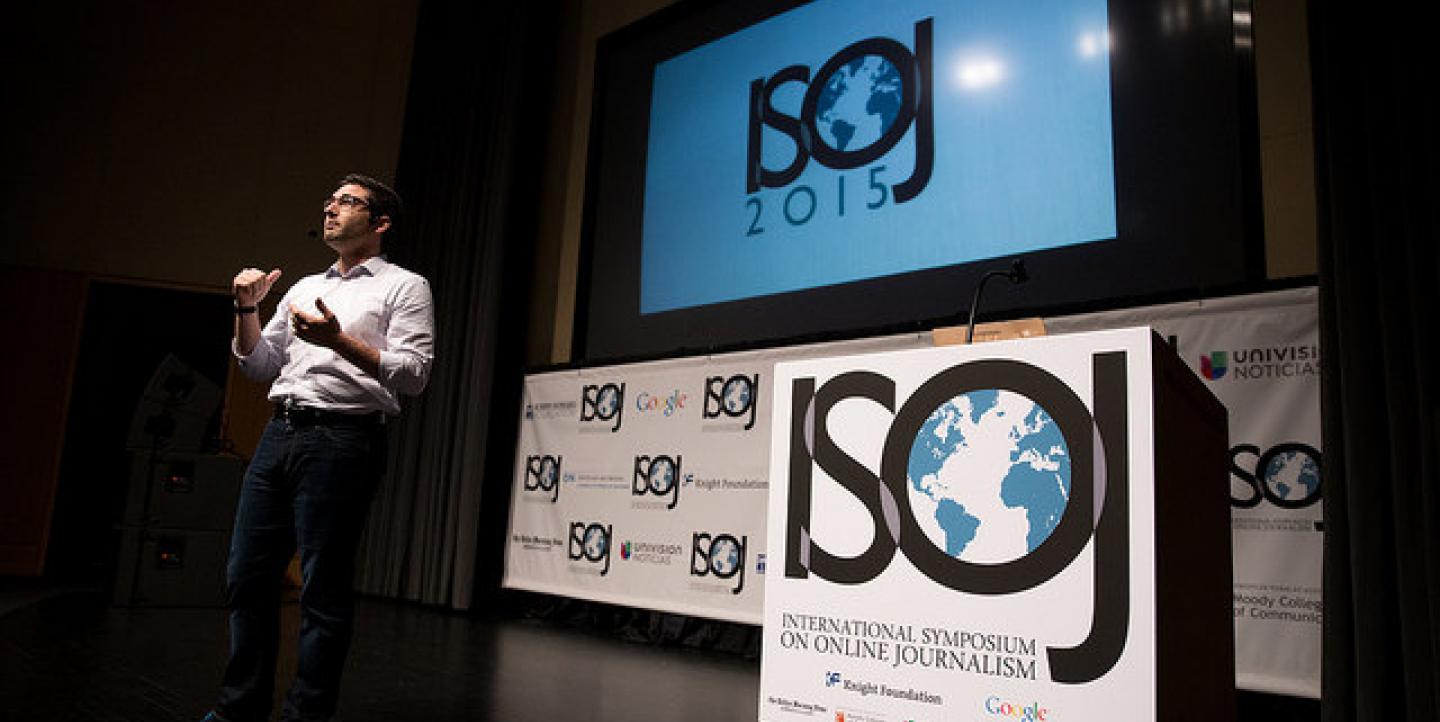Most newsrooms remain optimized for a desktop world when the vast majority of their customers consume their news on handheld devices, panelists on the mobile revolution told attendees of the International Symposium on Online Journalism in Austin, Texas.
Stacy-Marie Ishmael, editor for news apps at BuzzFeed News, asked how many in the audience could create or edit a story and post it to their news organizations’ platforms directly from their mobile devices, without logging onto a computer. No one raised a hand. Ishmael said she can do those things because BuzzFeed has emphasized mobile so strongly.
“It's not only about the end-user experience, it's also about the creator experience,” she said. But BuzzFeed isn’t completely mobile-optimized either, she said. The company gives every employee a laptop, when giving everyone a mobile device would be better -- and not the most advanced mobile, but one that is closer to what most customers are using.
Ishmael joined Trei Brundrett, chief product officer at Vox Media; Adam Symson, senior vice president and chief digital officer at the E.W. Scripps Co.; Drake Martinet, global head of platform at Vice Media; and moderator Ann Marie Lipinski of the Nieman Foundation at Harvard University for a panel called “Reformatting the news: How journalism is responding to the mobile revolution and changes in consumers' viewing and reading habits.”
The panelists offered advice for media organizations trying to meet their customers where they live -- on their mobile devices. They spoke at the 16th annual ISOJ, organized by the Knight Center for Journalism in the Americas at the University of Texas.
Speed is the most important factor in mobile, said Brundrett. You have less than a second for your mobile site to load before users will give up and close the app, but the average load speed for apps is seven seconds, he said.
“We have to make mobile speed a company-wide metric just like pageviews,” he said. He noted that 20 percent of Google searches are on mobile, and that Google uses load speed as a metric in ranking sites.
Mobile speed is not just a factor of technology, Brundrett said. It doesn’t matter how fast your site loads if your editorial processes impede speed.
“Fast cars need good drivers,” he said.
Ishmael urged news organizations to remember that their audiences are not just in countries like the United States where high-speed networks enable quick load speeds.
“Some of my favorite mobile apps become less favorite when I land in a country” where speed is slow and roaming is expensive, she said.
After speed, Ishmael said, context is the most important factor in mobile. The devices give us a much more intimate relationship with our customers, she said, noting that most people keep them close to hand even in bed -- and that with Apple Watch, people will soon be taking mobile devices into the shower.
That intimacy also gives mobile a unique opportunity to annoy customers, especially through poorly thought-out push notifications, she said. Too often those notifications have nothing to do with individual customers’ interests or locations, she said.
Symson agreed, noting that he gets push notifications for traffic problems not on his commute. Media is still “over-broad,” he said.
“The more you know your consumer, the more you'll be able to deliver a product that surprises and delights them,” he said.
Martinet showed some of Vice’s videos and refuted the notion that millennials -- who make up most of Vice’s audience -- are uninterested in news. News clips are among the site’s most popular content on mobile, he said.
“A generation is crying out for something not being offered,” he said.
Patrick Butler is the Vice President of Programs for the International Center for Journalists.
During his presentation, Martinet showed snippets of Vice News video reports. Below is the trailer for "Ghosts of Aleppo," one of the videos Martinet showed that focuses on the ghost town in Syria.
Image of Drake Martinet CC-licensed on Flickr via UT Knight Center


